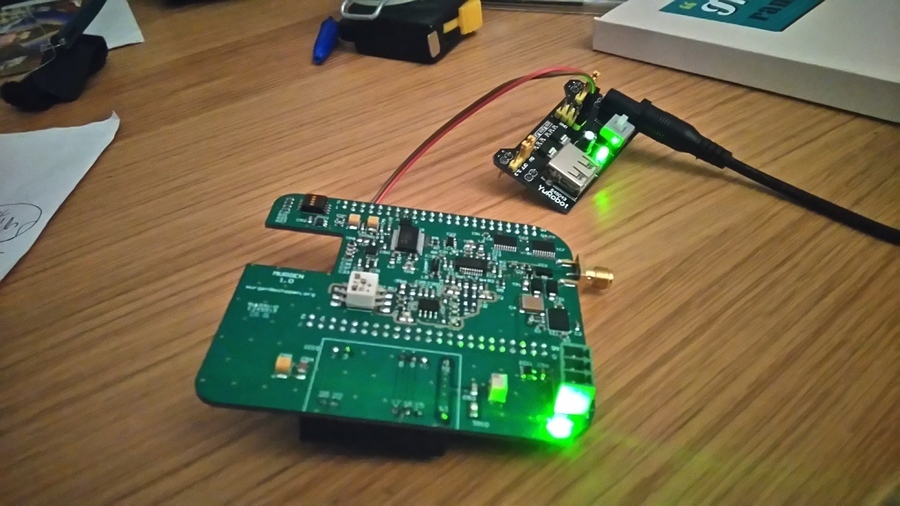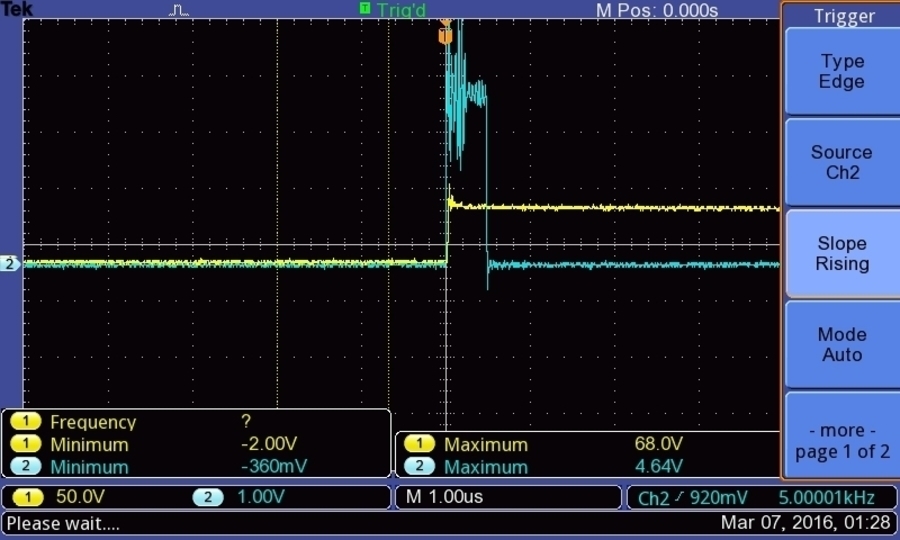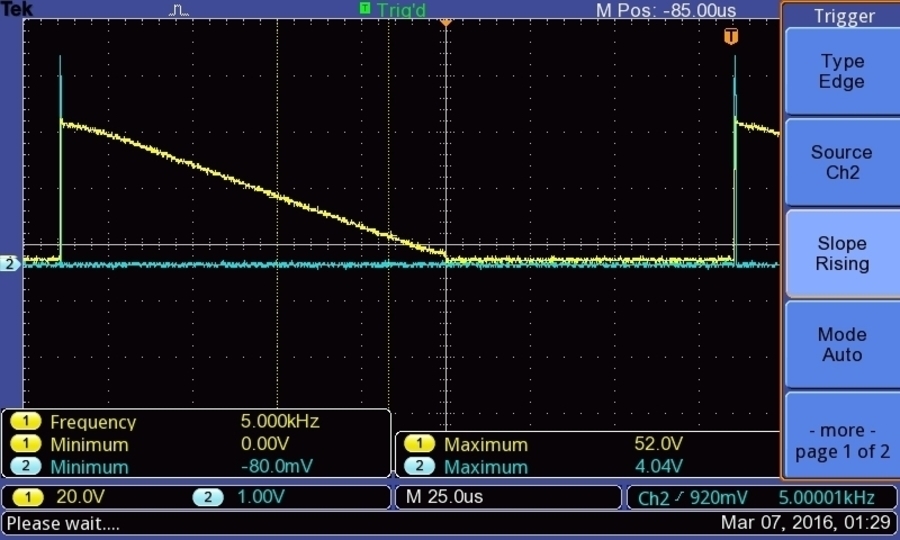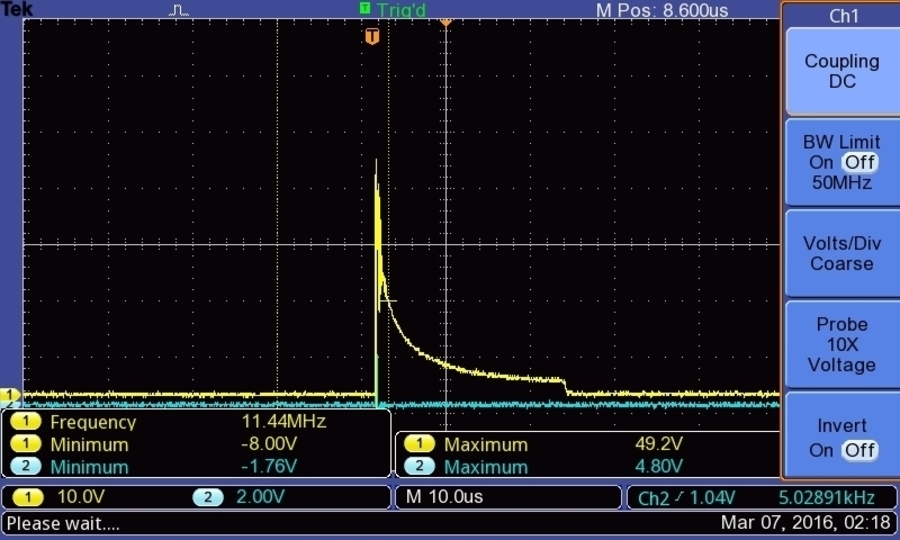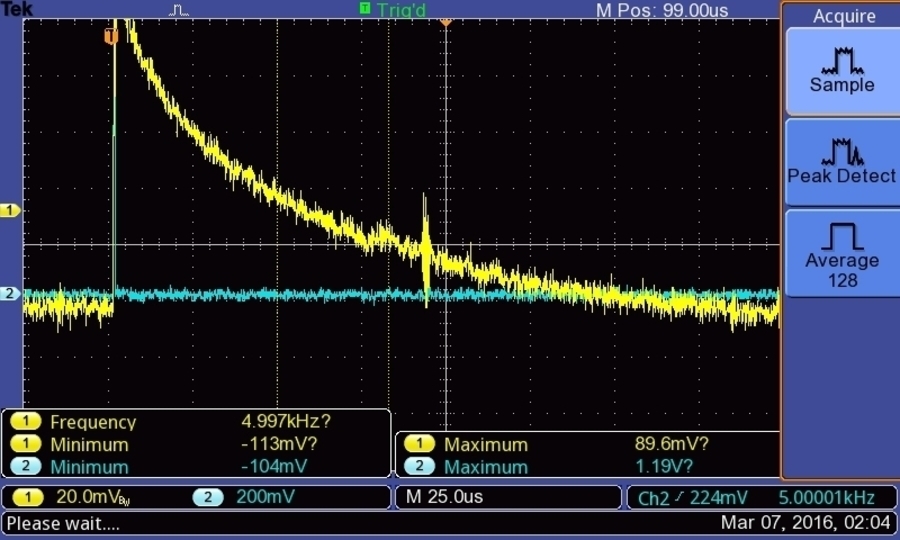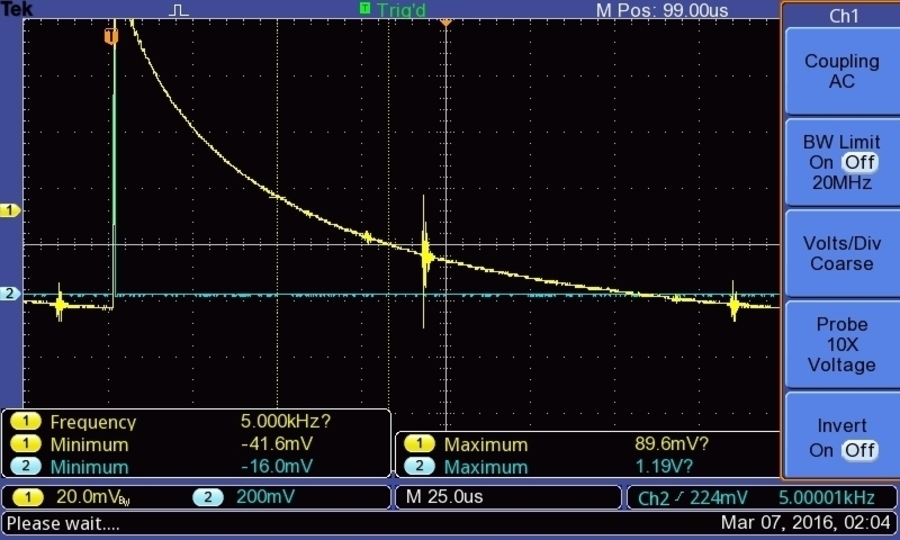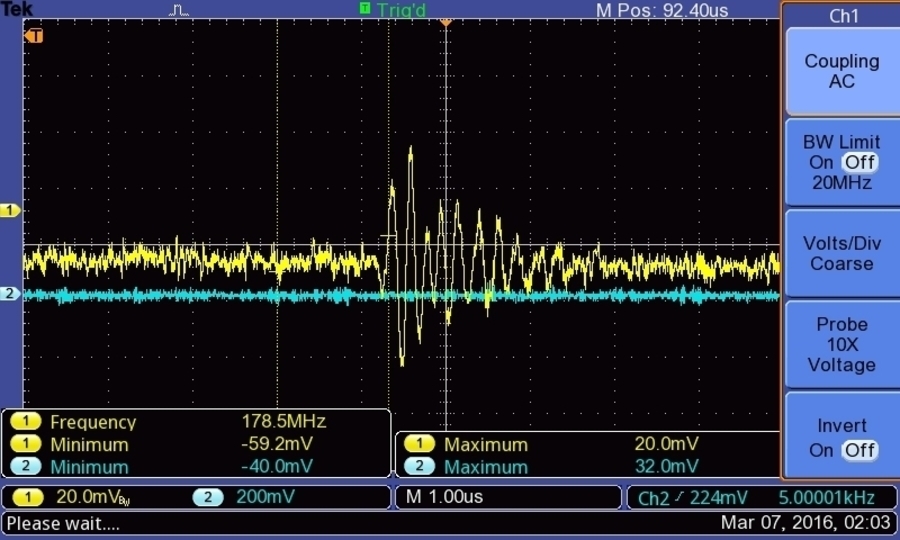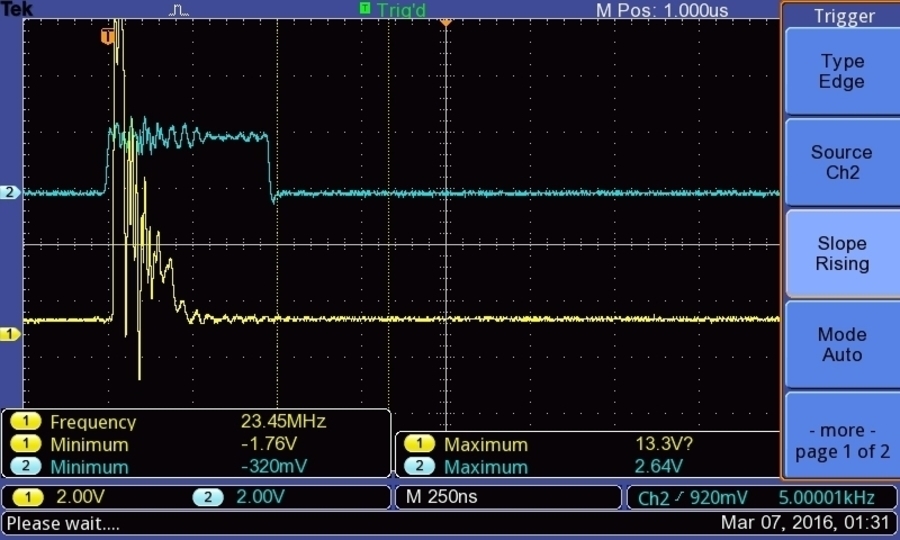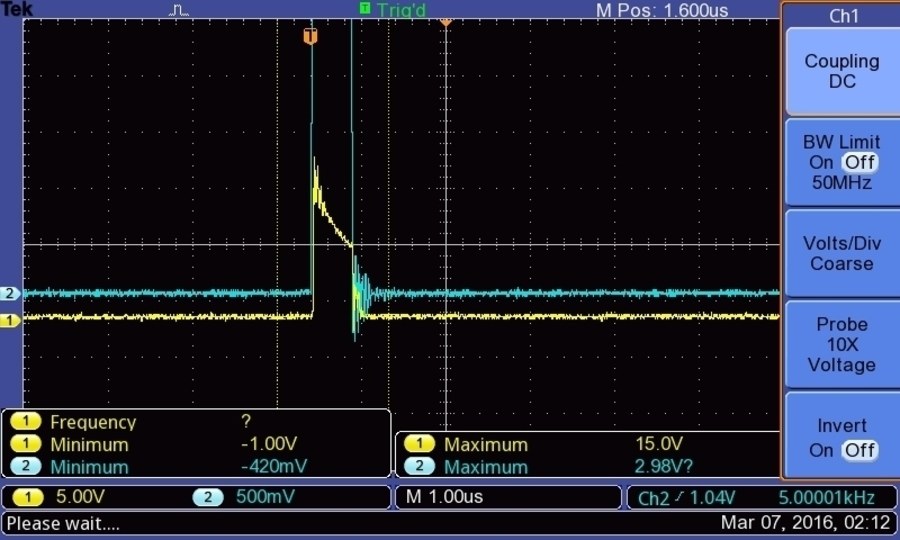Session 1 - 06 March 2016
Other sessions
- Session 1 : Powering the board, power use, first (bad) trigging and echoes (06 March 2016)
- Session 2 : Non-controlled pulsing, inverters, better echoes (11 March 2016)
- Session 3 : Getting controlled pulsing, but width not controlled (15 March 2016)
- Session 4 : Width of the pulses is getting controlled =) (19 March 2016)
- Session 4b : Simple data visualisation with BitScope (19 March 2016)
- Session 5 : moving the transducer to get the first image (20 March 2016)
- Session 6 : Getting a clinically usable image (28 March 2016)
- Session 7 : Getting cleaner images - code improvements (3 April 2016)
- Session 8 : Comparing acquisition speeds (3 May 2016)
^^
Happy to get the board and play with it.
TL;DR
- Setup of if 5V on stabilized. Power use within the 2.5W so far.
- Pulser behavior to dig
- Some echoes appear
Some pics with the BeagleBone black
Technical points
Power uses
Setup
To play it safe, we had the voltage control, P1, at 2.3 kOhm, so to get at ~50/60V output, to avoid being above the 100V limit from the pulser.
Sources
If used on a standard alim as we had, voltages get too low:
- 3.75V instead of 5V
- 2.88V instead of 3.3V
The buffer led gives light, that's because the ref voltage is too low.
Power
Once the 5V on a stabilized source, we read that it consumes ~135mA without a pulse, or 143mA with a 500ns, 50V pulse every 300us.
Pulser: the HV7360
Setup
HV7360 is fed by HVOUT - and HV7360 is controled by
- US_Pulse_P on InA
- US_Pulse_N on InB
Discussing with Sofian, I had connected USPN on GND, USPP on a 3.1V, 250ns pulse, at 300us macroperiod. That should take care of the pulse for the transducer.
Discussion and issues
Observations
- Connecting USP-N on GND does not control the pulse width.
- Connecting USP-N and USP-P on a 2V-pulse seems to control (at least make thinner) the pulse.
With the transducer on / off, it seems there is still a voltage baseline (500mV)
It seems that pulsing on USP-N shuts the pulser off.
- We need to control the pulser to send a clean pulse. We already have some echoes, but their birth is dirty.
